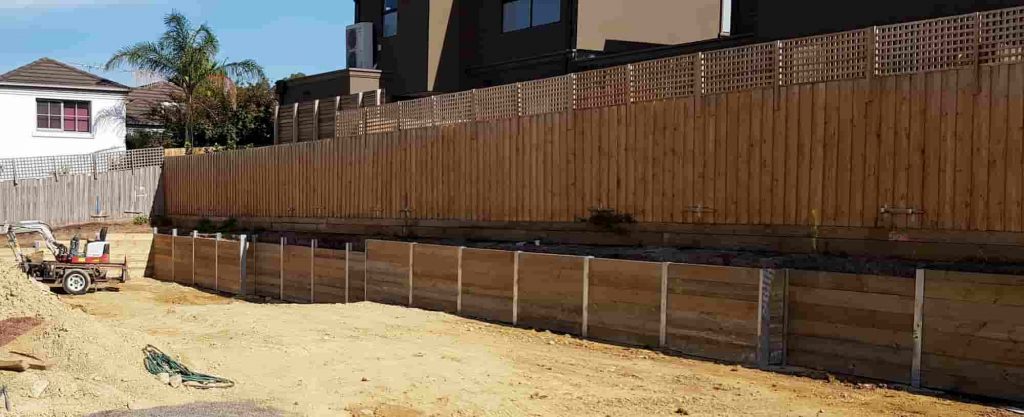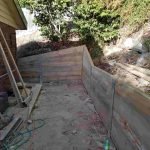Introduction
When it pertains to landscaping and structural integrity, retaining walls play an essential function. These engineered structures not just serve the practical purpose of preventing soil erosion however likewise include aesthetic value to your residential or commercial property. Whether you're looking to improve the charm of your garden or need a functional option for uneven surface, comprehending the nuances of retaining wall home builders is important. Our aim here is to check out the complex world of retaining wall building, focusing on materials such as timber sleeper, concrete sleeper, and H-beam techniques used by experts in the field.
Retaining Wall Builders: Crafting Stability and Beauty
Building a retaining wall is no little task; it requires careful planning, expert understanding, and an eye for style. Retaining wall contractors are proficient artisans who comprehend the science behind stability while making sure that charm isn't jeopardized. They work meticulously to pick the best materials and techniques customized to satisfy each unique requirement.
Why Pick Professional Retaining Wall Builders?
The concern occurs: why should you think about employing professional retaining wall home builders rather of handling the project yourself?
- Expertise: Specialists have comprehensive training and experience in constructing long lasting keeping walls. Safety: An improperly developed wall can cause catastrophic failures. Experts make sure that walls are safe and compliant with regional regulations. Aesthetics: Competent builders know how to integrate walls into the landscape perfectly, improving your property's visual appeal.
Understanding Different Types of Keeping Walls
1. Gravity Walls
Gravity walls count on their weight to resist lateral earth pressure. These walls can be made from various materials including stone or concrete.
Advantages of Gravity Walls
- Simple design Cost-effective Naturally blends with landscape
2. Cantilevered Walls
Cantilevered walls utilize take advantage of; they are usually made from enhanced concrete and have a thick base that extends back into the soil.
Benefits of Cantilevered Walls
- Economical for taller structures Efficient use of material Can handle considerable loads
3. Anchored Walls
Anchored maintaining walls are secured by anchors that extend into steady soil or rock behind them.
Pros of Anchored Walls
- Suitable for high slopes Added stability without large masses Flexible design options
Key Products Used by Retaining Wall Builders
Timber Sleeper Retaining Walls
Timber sleepers have actually become progressively popular due to their natural appearance https://tuffstuffretainingwalls.com.au/ and ease of installation.
Characteristics of Wood Sleepers
- Environmentally friendly Versatile in design Cost-effective compared to other materials
Considerations: While lumber offers many benefits, it's essential to pick treated wood resistant to rot and pests.
Concrete Sleeper Retaining Walls
Concrete sleepers provide a robust option known for their durability.
Features of Concrete Sleepers
- High strength-to-weight ratio Minimal upkeep required Resistant to weather conditions
Installation Tips: Correct drain behind the wall is vital to avoid water build-up which could weaken its stability.
H-Beam Keeping Walls
H-beams offer exceptional assistance thanks to their shape which enables them to distribute weight evenly.
Advantages of H-Beams
- Superior load-bearing capacity Durable against ecological elements Quick setup process
Usage: Typically used in business applications due to their dependability and strength.
The Design Process for Maintaining Walls
Site Assessment
Before any building begins, a thorough site assessment should be conducted. This includes taking a look at:

Planning & Style Phase
Once evaluated, it's time for style-- this includes determining:
The height and length of the wall. Material choice (timber sleeper vs concrete sleeper). Aesthetic considerations.Construction Strategies Utilized by Professionals
Excavation & Preparation
The initial step in building a retaining wall is excavation-- guaranteeing that you have firm ground upon which your wall will sit is critical.
Remove topsoil. Level out the area appropriately. Create drain channels if necessary.Foundation Work
A strong structure warranties stability:
Lay down gravel for drainage. Set up formwork if utilizing concrete. For lumber sleepers, establish anchor points in the ground.Installation Steps for Different Types of Materials
Installing Timber Sleeper Walls
Measure and cut sleepers according to your design. Position them vertically or horizontally based on aesthetics. Secure them utilizing stakes or brackets for included strength.Installing Concrete Sleeper Walls
Mix concrete according to specifications. Pour concrete into types set up during structure work. Allow proper curing time before applying additional layers or finishes.Installing H-Beam Walls
Drive H-beams into pre-dug holes at specified intervals. Backfill around beams while maintaining level alignment. Use extra assistances if required during building phases.Drainage Solutions for Keeping Walls
Proper drain is paramount when developing any type of retaining wall as it helps prevent hydrostatic pressure build-up which can lead to failure over time.
Why Is Drainage Important?
Hydrostatic pressure can weaken your structure leading it possibly collapsing under excess water weight; thus:
Incorporate weep holes throughout construction. Use drain pipes behind the wall directing water far from foundation areas. Ensure proper grading around the base so water streams far from your structure effectively.Maintenance Tips for Long-lasting Retaining Walls
To keep your maintaining walls looking great while operating properly:
Regularly inspect for cracks or bulging indications showing failure. Clean debris from weep holes periodically. Reapply treatments (for timber) every few years as needed depending on direct exposure conditions.FAQs about Retaining Wall Builders
Q1: Can I develop my own maintaining wall?
A: Yes, you can build one yourself; however, employing experts ensures security and compliance with regional policies while offering expertise in design and product selection.
Q2: For how long do timber sleeper walls last?
A: Dealt with timber sleeper walls can last anywhere from 15-- thirty years depending on environmental conditions and upkeep practices adopted over time.
Q3: What's more cost-effective - wood or concrete sleepers?
A: Lumber sleepers tend to be less costly upfront than concrete; however, consider long-lasting upkeep costs when making your decision.
Q4: Do I need a permit for my retaining wall?
A: Depending on local policies concerning construction projects, permits may be needed specifically if going beyond certain heights; constantly contact local authorities.
Q5: Exist specific styles available?
A: Absolutely! There are many styles varying from rustic lumber aesthetic appeals through sleek modern-day styles including stone or brick surfaces-- consulting professionals typically yields customized solutions.
Q6: How do I understand what material is finest suited?
A: Factors such as budget plan restraints, desired aesthetics, height requirements along with ecological considerations all contribute towards picking ideal materials-- seeking advice from specialists can significantly assist this decision-making process!
Conclusion
In conclusion, constructing a robust yet beautiful retaining wall is an undertaking that deserves attention spanning both artistry as well as engineering prowess-- retaining wall builders embody this balance skillfully! Whether going with timber sleeper services using natural appeal or going robust with concrete sleep options along with sophisticated approaches like H-beams; engaging well-informed specialists makes sure success throughout all stages-- from preliminary planning through continuous upkeep strategies!
With this comprehensive guide covering different aspects involved in creating amazingly steady landscape functions we hope you feel better geared up moving forward! Accept these insights offered here today-- your outdoor area will thank you later!
